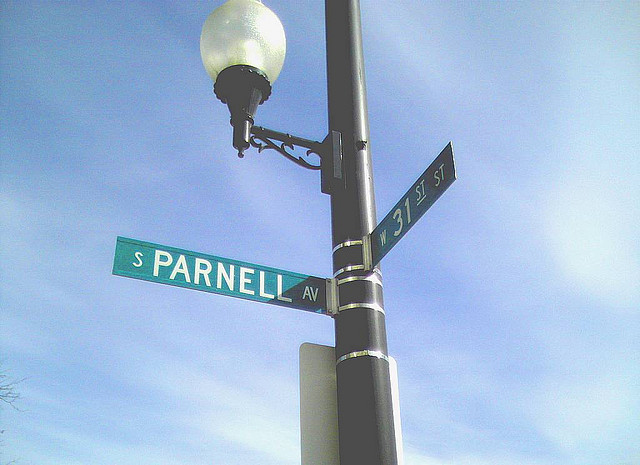Learn About Chicago's Street Names With The Chicago History Museum
By Chuck Sudo in News on Feb 20, 2012 11:00PM

Chicagoist/Chuck Sudo
Did you know that Parnell Avenue was named after Thomas Parnell, an Irish statesman and poet who was appointed archdeacon of Clogher? Or that St. Mary Street was named after the first Catholic church in Chicago? Or that Lawler Avenue was named after Gen. Michael Lawler, a Civil War hero?
These are a few of the things you'll learn by browsing the Chicago History Museum's online database of all the streets in the city. The streets are broken down by location, how long they run, and origin of name (if known). Here are five other notable facts:
- Laflin Street was named after Matthew Laflin, a pioneer real estate promoter who established Chicago’s first stockyard and also established the first bus line.
- Calumet Ave. doesn't refer to a lake or channel, but a pipe used by native tribes to seal peace treaties. It's a variation of the French word "chalumet:" a shepard's pipe.
- Jarvis Avenue was named after R.J. Jarvis, a friend of the Roger and Touhy families and founders of Rogers Park.
- Oakenwald Avenue gets its name from Stephen Douglas. It was also the name of his estate.
- Wrightwood Avenue was named after a subdivider and attorney named Edward Wright.
We could read this list for hours and learn untold factoids about the streets we grew up on and walked as children. The one thing it doesn't answer is how the joke about three Chicago streets that rhyme with vagina came about.
(Although we now know that Melvina is named after a Wisconsin summer resort, Paulina was named after the wife of subdivider Ruben Taylor, and Lunt was named after Orrington Lunt, a landowner and subdivider of Evanston and Rogers Park, who also helped to found Northwestern University and the Chicago Board of Trade.)